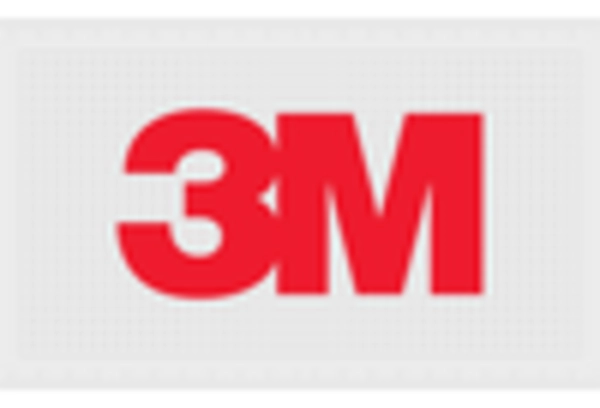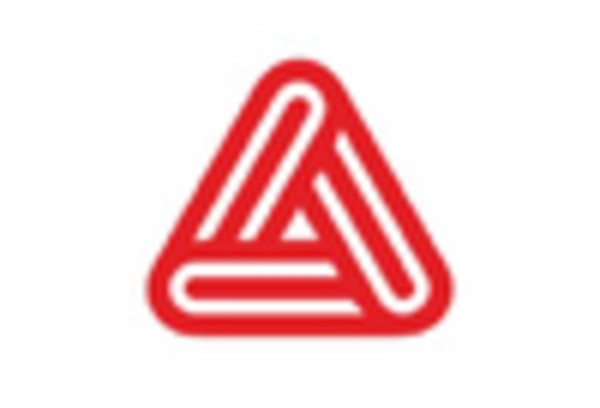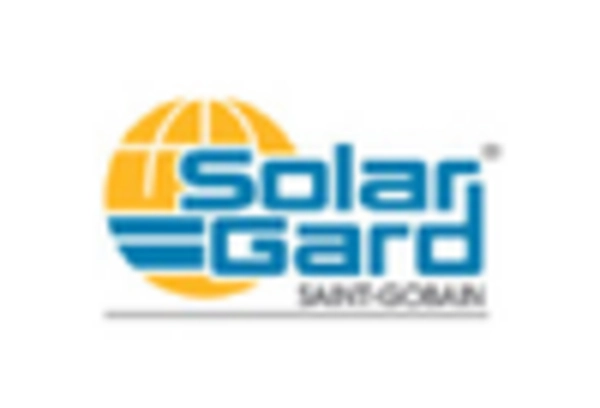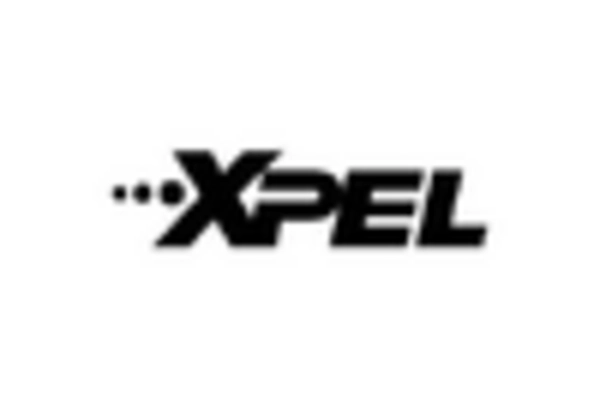The automotive film market is currently characterized by a dynamic competitive landscape, driven by innovation, technological advancements, and a growing emphasis on sustainability. Key players such as 3M (US), Avery Dennison (US), and XPEL (US) are at the forefront, each adopting distinct strategies to enhance their market positioning. 3M (US) focuses on product innovation and expanding its portfolio of protective films, while Avery Dennison (US) emphasizes partnerships and collaborations to enhance its distribution network. XPEL (US), on the other hand, is heavily investing in digital transformation to streamline operations and improve customer engagement. Collectively, these strategies contribute to a competitive environment that is increasingly focused on differentiation through technology and customer-centric solutions.
In terms of business tactics, companies are localizing manufacturing and optimizing supply chains to enhance efficiency and reduce costs. The market structure appears moderately fragmented, with several players vying for market share. However, the influence of major companies is significant, as they set industry standards and drive innovation. This competitive structure allows for a diverse range of products and services, catering to various consumer needs and preferences.
In October 2025, 3M (US) announced the launch of a new line of eco-friendly automotive films designed to reduce environmental impact while maintaining high performance. This strategic move not only aligns with the growing consumer demand for sustainable products but also positions 3M (US) as a leader in environmentally responsible manufacturing practices. The introduction of these films could potentially enhance brand loyalty and attract environmentally conscious consumers.
In September 2025, XPEL (US) expanded its operations by opening a new manufacturing facility in Texas, aimed at increasing production capacity and reducing lead times. This expansion is strategically important as it allows XPEL (US) to better serve its North American customer base and respond swiftly to market demands. The facility is expected to enhance operational efficiency and support the company's growth trajectory in the competitive landscape.
In August 2025, Avery Dennison (US) entered into a strategic partnership with a leading automotive manufacturer to provide customized film solutions for their new vehicle models. This collaboration is indicative of a trend towards co-creation and innovation in product development, allowing both companies to leverage each other's strengths. Such partnerships are likely to enhance product offerings and improve market penetration for both parties.
As of November 2025, current trends in the automotive film market include a strong focus on digitalization, sustainability, and the integration of artificial intelligence in manufacturing processes. Strategic alliances are increasingly shaping the competitive landscape, enabling companies to pool resources and expertise. Looking ahead, competitive differentiation is expected to evolve, with a shift from price-based competition to a focus on innovation, technology, and supply chain reliability. Companies that can effectively leverage these trends are likely to gain a competitive edge in the market.

















Leave a Comment